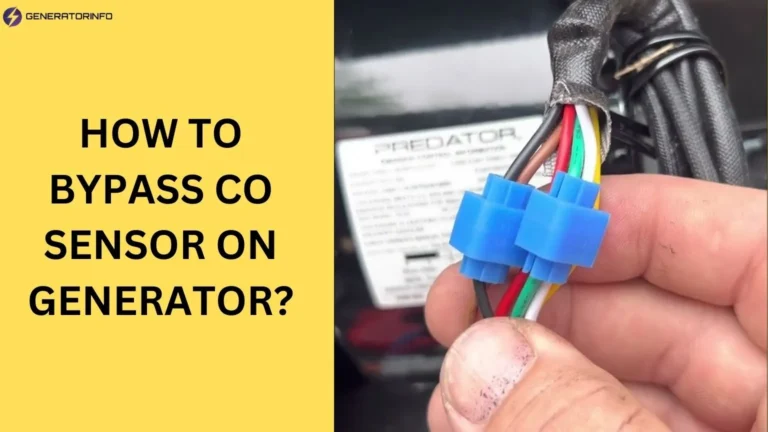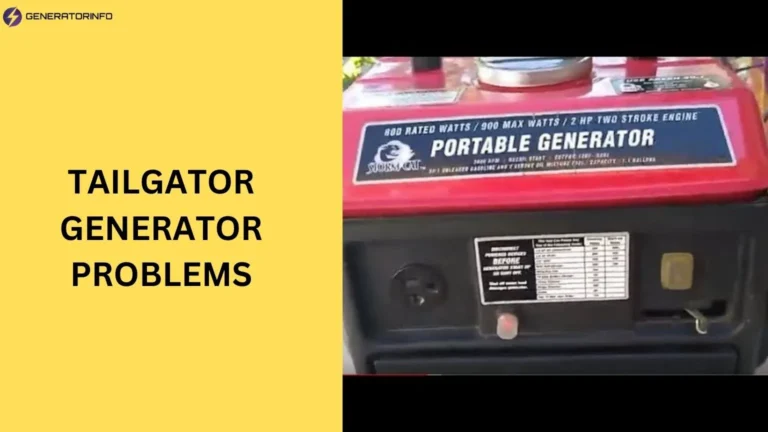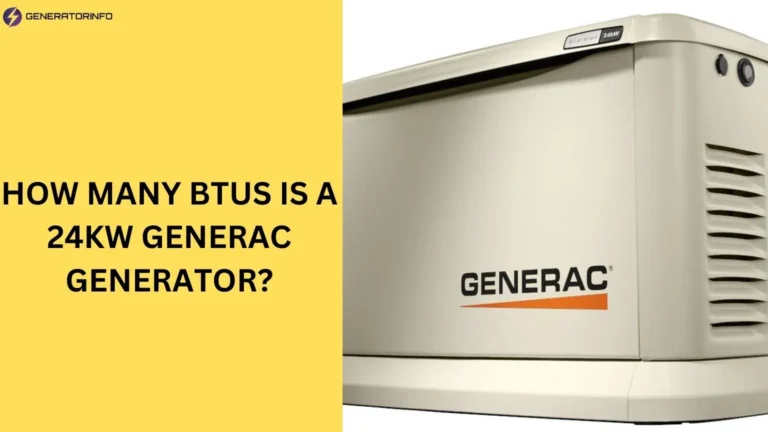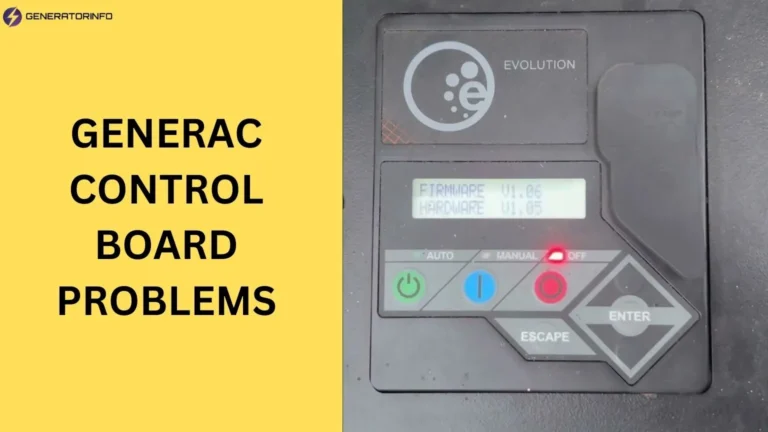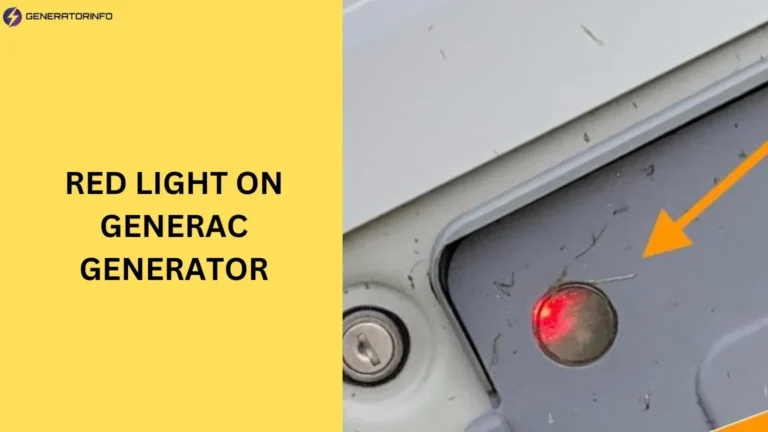How to Get Full Power from Generator? (Guide) of 2025
How to Get Full Power from Generator? Generators are essential devices that provide power during outages, on camping trips, or for remote worksites.
But to ensure your generator operates at its maximum capacity, there are specific steps and best practices you need to follow. In this guide, we’ll explore how to get full power from your generator and maximize its efficiency.

Understanding Your Generator’s Power Output
Generators come with a specified power output, which is usually mentioned in watts. Understanding this is the first step in learning how to get full power from a generator.
Rated vs. Surge Power
Generators typically have two power ratings:
- Rated Power: The continuous power output the generator can handle.
- Surge Power: The extra power a generator can provide for a short period, typically when starting up appliances.
Properly Load Balancing Your Generator
A critical aspect of how to get full power from a generator is ensuring that the load is balanced. Overloading or unevenly distributing power demands can cause your generator to underperform.
Distribute the Load Evenly
When connecting multiple devices, distribute the load as evenly as possible. Avoid plugging in devices that draw more power than the generator can handle.
Avoid Overloading
Overloading your generator not only reduces efficiency but can also lead to damage. Always check the power requirements of your appliances before connecting them.
Regular Maintenance for Optimal Performance
Regular maintenance is crucial if you want to know how to get full power from a generator. A well-maintained generator performs better and lasts longer.
Change the Oil Regularly
The oil in your generator should be changed periodically to ensure the engine runs smoothly.
Clean or Replace the Air Filter
A clean air filter helps the generator run more efficiently. Replace the filter if it’s clogged or dirty.
Check Spark Plugs
Worn-out spark plugs can lead to poor performance. Regularly inspect and replace them if necessary.
Using the Right Fuel
Fuel quality directly impacts your generator’s power output. If you want to learn how to get full power from a generator, paying attention to the type and quality of fuel used is essential.
Use Fresh Fuel
Stale or contaminated fuel can reduce efficiency. Always use fresh fuel and store it properly to avoid contamination.
Opt for High-Quality Fuel
High-quality fuels, like those with higher octane ratings, can improve performance and ensure your generator delivers its full power.
Optimizing Generator Placement
Where you place your generator plays a significant role in its efficiency. Here’s how to ensure you’re positioning it for maximum power output.
Ventilation
Generators need proper ventilation to avoid overheating. Placing your generator in a well-ventilated area helps maintain optimal temperatures and prevents power drops.
Level Ground
Placing the generator on level ground ensures that oil and fuel are distributed evenly, contributing to consistent power output.
Using the Right Extension Cords
Using the correct extension cords is another crucial factor in how to get full power from a generator. Incorrect or low-quality cords can cause power loss.
Choose the Correct Gauge
Thicker (lower gauge) cords reduce resistance and ensure that your appliances receive full power.
Limit Cord Length
The longer the extension cord, the more power you lose. Use the shortest cord possible for your needs.
Monitoring Power Usage
One of the best ways to ensure you’re getting full Power from your generator is by closely monitoring your power usage.
Use a Wattmeter
A wattmeter helps you keep track of how much power each appliance is using. This can prevent overloads and ensure efficient power distribution.
Turn Off Unnecessary Appliances
Reducing the number of running appliances can help ensure that essential devices get the power they need.
People also ask
How to get the most power out of a generator?
To get the most power out of a generator, follow these key steps:
Understand the Generator’s Capacity: Know the rated and surge power of your generator. Stay within these limits to prevent overloading.
Use Fresh, High-Quality Fuel: Always use fresh fuel with the correct octane rating to ensure optimal performance.
Balance the Load: Distribute the electrical load evenly and avoid overloading the generator.
Regular Maintenance: Change the oil, clean or replace air filters, and inspect spark plugs regularly to keep the generator running efficiently.
Proper Ventilation: Place the generator in a well-ventilated area to avoid overheating and ensure it operates at full capacity.
Use Correct Extension Cords: Opt for thick, short cords to minimize power loss.
How to increase generator output power?
To increase generator output power, follow these tips:
Regular Maintenance: Keep the generator in top condition by changing the oil, cleaning filters, and replacing spark plugs as needed.
Use High-Quality Fuel: Opt for fresh, high-octane fuel to enhance performance.
Optimize Load Management: Distribute the load evenly and avoid overloading the generator to ensure maximum efficiency.
Improve Ventilation: Place the generator in a well-ventilated area to prevent overheating and maintain consistent power output.
Upgrade Components: Consider using higher-capacity alternators or better-quality extension cords to reduce power loss.
Why is my generator not producing full power?
If your generator is not producing full power, it could be due to:
Overloading: Exceeding the generator’s rated capacity can reduce output.
Fuel Issues: Using stale or low-quality fuel can affect performance.
Maintenance Problems: Dirty air filters, old oil, or worn spark plugs can impact power.
Ventilation: Poor airflow can lead to overheating and reduced output.
Faulty Components: Issues with the alternator or electrical connections may cause power loss.
How do you find the maximum power output of a generator?
To find the maximum power output of a generator:
Check the Manufacturer’s Specifications: Look for the rated (continuous) power and surge (peak) power ratings, usually listed in watts.
Calculate Based on Load: Ensure the total wattage of all connected devices doesn’t exceed the generator’s rated power.
Use a Wattmeter: Measure the actual power being used by connected appliances to ensure you’re not exceeding the generator’s maximum capacity.
Conclusion
In Conclusion, Understanding how to get full power from a generator involves proper maintenance, smart usage, and attention to details like fuel quality and load distribution. By following these tips, you can ensure that your generator operates at its maximum potential, providing reliable power whenever you need it.

